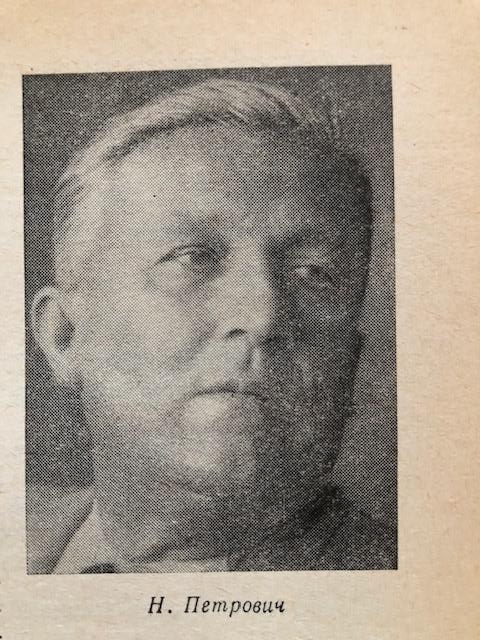Some technical problems for this second course of October.
They did not prevent the Master from giving his course and the best proof is the report below
Master's words

Travelling friends have told me that on Greek islands (Santorini, Mykonos...) tourists gather to watch the sunset, and finally applaud! In my life, I've never seen anyone applaud anything other than a performance, a work, a piece of art. But then, do they applaud the work of God? I would be surprised if there were no atheists in those crowds. So what is it? A mystery.
"I have travelled all over the world for 20 years, and never met a chess player who agreed to accompany me to visit an art gallery" (A. Karpov). Music, painting, chess are arts, maybe even haute couture... Two pleasant quotes from K. Lagerfeld:
"I want to be nice but I don't want it to show
"My business has always been to work harder than others to show them how useless they are.

A remark: KL says he is in favour of "the 48-hour week". It all depends on what you are doing. I used to be hesitant on this point. Since I've been in the renaissance (fools say "retired") I'm for the 56-hour week, which I apply to myself.
Two players can be considered "players of the year": our Maxime (to whom we wish a happy birthday) and Levon Aronian, to whom we offer our best wishes on the occasion of his wedding three weeks ago. Here are a few quotes from the latter to help us understand him better. Some of what he said is at odds with the slouching German-Pratin politics that has since infected the state milieu. They are, however, quite nuanced. Needless to say, we are delighted with them. Here they are in the language in which I found them.
"Women cannot play chess. Women are generally much too emotional for chess. If they want to play really well they have to change their character and suppress their natural instincts. They have to take on male qualities. After all chess is a rough and hard game. As a chess player one has to be able to control one’s feelings, one has to be as cold as a machine. We men do not let ourselves be seduced by our emotions and feelings. But there is a paradox : the best chess players are the most emotional ones. One must be very passionate and romantic if one wants to create a masterpiece that is to last for centuries".
"Many people believe that chess and mathematics are closely connected. But we chess players are not necessarily good at maths. Chess becomes a logical game when you approach the endgame. In the middlegame it is a game of intuition, of creativity and passion. I sometime love logical chess, the geometry of certain games. But I am not a logically structured chess player. As I said I am a romantic. I love  literature, art and music".
literature, art and music".
"A gentleman at the board can suddenly turn into a barbarian. Like Anand. He is a metamorphic player. In a flash he can change into a completely different person, from an almost dogmatic player into a beast".
All Our first diagram is an example of conjugated squares, where a simple reasoning gives us very quickly the complex of boxes. The second is a nod to Grigoriev... and Spassky. Finally a fight of two Rooks against Queen where one is even more at ease... with only one Rook.
The Labyrinth: a study by a great Romanian composer, considered nightmarish 70 years ago, which nowadays seems more accessible. Is it correct? A variant worries us on the 4th move. Notice to the great analysts... or better equipped!
Two topical endgames (the last "world cup") sometimes leading to... inhuman, but fortunately containing many clear lessons, as well as artistic elements. Both with the same material, rook and pawn against bishop and pawn, without a passed pawn. In one is a study including a 12 move manoeuvre to transmit the line. Purists will say 11.5 since, by definition, one more white move is played. There are not many examples (the study I published last year with N+2P/R has "only" 8... or more exactly 7.5). I remember such a feat in the rook ending against 3 linked pawns. http://www.france-echecs.com/article.php?art=20131108214634298 see 07/12/2013.

In the other, there is a partial echo-chameleon and then a subtle reciprocal zugzwang which could also inspire great composers. Both are exciting, but with one difference: the number of decisive mistakes will be 20 and... 1 !
Three exercises for the next session, the second being a reversal of an unsolvable study.
The game of the day is one of the most characteristic of Karpov's entire career: there is nothing, or almost nothing, but always a small threat of something (the "pequeñas ventajas" Arturo Pomar spoke of). When it lasts 30 moves, it's tiring, even for a mastodon. It reminds us of the famous sentence of L. Psakhis: "The best way to get a big advantage is to play for a small advantage".
 For practice, a good dose of 2# as usual, among them two French works. In 3#, a 19th century amusette, a pretty old Bohemian, a festival of declensions, and then an astonishing focal piece by a great Hungarian composer whose name is unfortunately often associated with a completely uninteresting theme. Then a 4#.
For practice, a good dose of 2# as usual, among them two French works. In 3#, a 19th century amusette, a pretty old Bohemian, a festival of declensions, and then an astonishing focal piece by a great Hungarian composer whose name is unfortunately often associated with a completely uninteresting theme. Then a 4#. 
French proposed at the Russian championship last year. Another 4#, Austrian, where the White King sets the example. A 5# bishop story, then a farandole around the c3 square. The first helpmate 2# is "with set play" (we would now say "helpmate 1,5#") where White moves first. The first helpmate 3# (with twin) is the correction of a demolished problem. The second, by the same author, I found difficult. The last one also has a set play, but obvious. Finally a masterpiece in selfmate, combining a Greek cross with a St Andrew's cross.
A good treat. See you in a month for the last course of the calendar year, given the December break. Deus vos custodiat.
Comments
1 Alain On Thursday, july 28, 2022
http://lecoursdumaitre.e-monsite.com/pages/cours/cat-2021/12-octobre-2021.html
2 Alain On Thursday, november 30, 2017